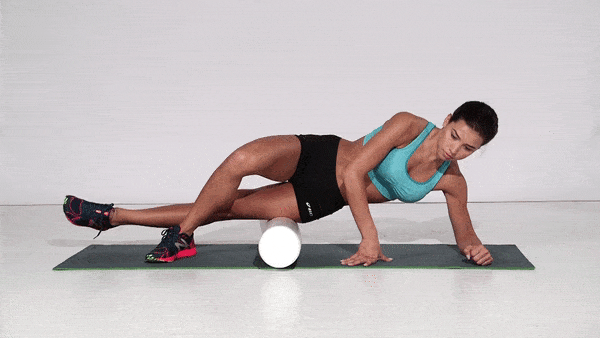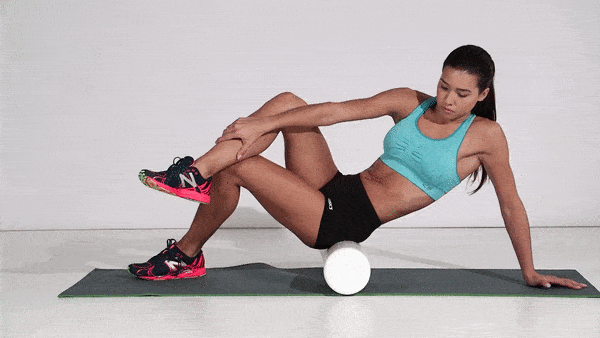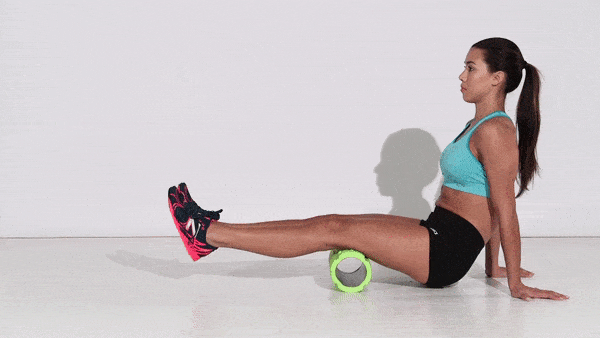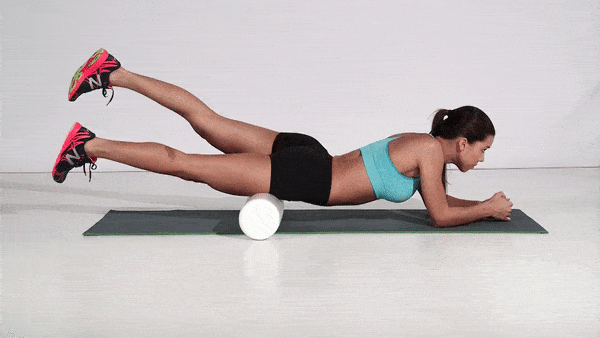Chances are you already know all about the benefits of foam rolling for your workouts. But if you just use a foam roller to rehab injured muscles, you’re not getting the most out of it. The foam roller may be one of the best training tools at your disposal.
When you know how to foam roll properly, you’re not only providing your body with an easy form of self-massage to soothe achy muscles, you’re also improving circulation, speeding recovery, and feeling better overall during your next workout. And once you’ve mastered the basics of foam rolling, there’s even more you can get out of this wondrous cylinder.
Foam rollers—which come in a variety of densities and sizes—can also be a valuable part of a healthy warmup and cooldown routine. Foam rolling improves circulation, which gets the body ready for a workout and helps it recover afterward. And because rolling breaks down knots that limit range of motion, it preps your muscles for stretching.
To get started, here’s a quick guide on how to use a foam roller to warm up before your run and cool down after. Roll slowly and when you find a tender spot, focus in on it by rolling back and forth until you feel it soften or release.
Related article: 11 Dynamic Stretch Exercises To Assist With Massaging Hard To Reach Muscles For Instant Relief
How to use this list:
- Repeat each release that follows two to three times.
- All of the releases include rolling over the muscle slowly, followed by cross friction.
- For each strength exercise, follow the instructions on how many reps to perform.
Warm Up:
Rolling increases blood flow and releases muscle tightness that can interfere with proper running form.
Calves:

How to:
- Start sitting on the floor with legs extended out in front of you.
- Place the roller under left calf. Rest right foot on the floor or cross right ankle over left for extra pressure.
- Use your hands to press hips off floor, then roll from the ankle to below the knee.
- Rotate left leg in, then out.
- Repeat on right calf.
Related article: A Body Changing Workout To Gain Strength And Body Toning Even If You Have Bad Knees
Iliotibial Band:

How to:
- Lie on left side with the foam roller near left hip.
- Cross right leg over left and rest right foot on the floor with the knee bent.
- Using your forearm, roll along your outer thigh from outer hip to just above the knee.
- Increase the pressure by stacking your legs.
- Repeat on right side.
Related article: 9 Mobility Exercises to Relieve Shoulder Pain
Piriformis:

How to:
- Start by sitting on the roller with left knee bent, foot on floor.
- Cross right ankle over left knee.
- Lean onto your left side and roll forward and back along your left outer hip and glute, using your left leg to control the pressure.
- Rotate hips left and right to find the trigger points and knots, then concentrate there for 60 seconds.
- Repeat on right side.
Related article: 8 Exercises to Relieve Sciatica Pain
Cool Down:
Rolling flushes out toxins to help recovery. (And with this foam roller workout, you can accelerate recovery.)
Hamstrings:

How to:
- Sit on the floor and place the roller under your thighs.
- Use your hands to lift your hips then roll from the knees to the glutes.
- To increase the pressure, cross right leg over left and roll one leg at time, turning left leg in and out.
- Repeat on right leg.
Related article: The Importance of Stretching To Boost Muscle Recovery and Flexibility
Adductors:

How to:
- Lie facedown on a mat on your forearms, shoulders over elbows with right leg extended out to the side, knee bent.
- Place the roller on your inner right thigh area and use your forearms and left leg to shift your weight back and forth to roll the inner right thigh.
- Roll from knee to hip then repeat on left leg.
Related article: 6 Stretching Exercises to Help Reduce And Relieve Lower Back Pain
Quadriceps:

How to:
- Lie facedown on the mat on forearms with a roller placed under the front of your thighs.
- Use your forearms to shift back and forth to slowly roll up and down from the bottom of your hip to the top of your knee.
- For added pressure, lift left leg and roll one leg at a time.
- Repeat on left leg.

